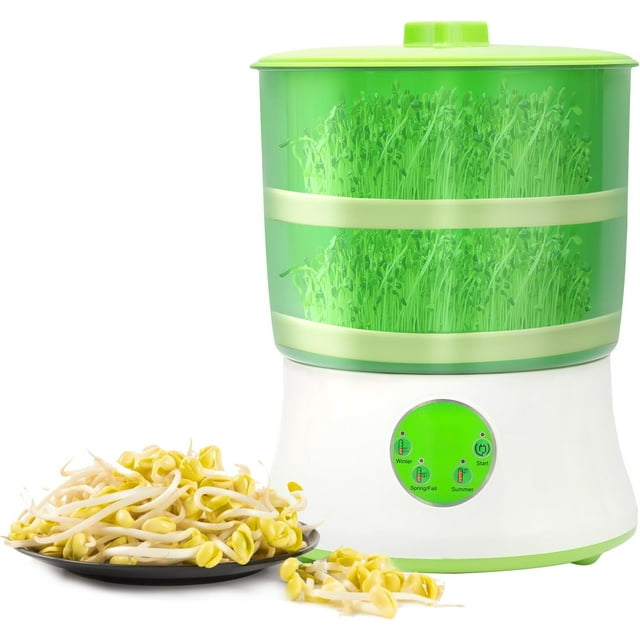Revealing the Health Gains of Mung Beans: A Dietary Treasure

Green legumes have long been recognized for their health benefits and flexibility in dishes. These small, verdant legumes are not only filled with essential nutrients but also offer a variety of health benefits that make them a worthwhile addition to any diet. As we explore the remarkable advantages that mung beans bring to our well-being, it becomes apparent that these modest beans are a valuable food worth trying.
Often found in Asian dishes and gaining popularity worldwide, mung beans are abundant in protein, fiber, vitamins, and minerals. They play a crucial role in promoting digestive health, supporting weight management, and even balancing blood sugar levels. Learning about the health benefits of mung beans can motivate many to incorporate them into their meals, whether in salads, stews, or even as a major component in popular snacks produced by mung bean factories. Integrating mung beans is a step toward a more nutritious lifestyle, and discovering how to unlock their nutritional potential can lead to enduring benefits.
Nutritional Profile of Green Gram

Mung beans are a powerhouse of nutrition, featuring an impressive array of vital elements. These tiny legumes are moderate in calories but high in protein, rendering them an excellent choice for those looking to sustain or develop muscle without excessive calorie intake. In addition to protein, mung beans are rich in dietary fiber, which supports digestive health and helps control blood sugar levels. This unique combination of nutrients supports both energy and weight management.
In addition, mung beans are an outstanding source of vitamins and minerals. They contain significant amounts of B vitamins, including folate and vitamin B6, which are crucial for metabolism and energy production. Mung beans also provide essential minerals such as magnesium, potassium, and iron. These minerals perform a vital role in various bodily functions, including muscle function, nerve transmission, and oxygen transport in the blood.
Another remarkable aspect of mung beans is their elevated antioxidant content. They are rich in polyphenols and flavonoids, which help combat oxidative stress and reduce inflammation in the body. Eating foods high in antioxidants can enhance overall health and may lower the risk of chronic diseases. Incorporating mung beans into your diet not only enhances your nutritional intake but also contributes to long-term health and wellness.
Green Gram Processing Methods
Green grams are typically harvested when they are mature, and the processing starts at a mung bean factory where they undergo careful cleaning to eliminate impurities such as stones, dirt, and waste. This process is essential to ensure that only the best beans are used in subsequent processing. After washing, the beans are often immersed in liquid to moisten them, which helps ease the removal of the outer skin during following steps.
Once the mung beans are soaked, they can be cooked or prepared, depending on the desired end result. Steaming enhances their nutritional profile, keeping vitamins and minerals that might be lost during cooking. Additionally, steaming aids in sprouting the beans, a process that boosts their health benefits. Sprouting green grams greatly increases their enzymatic activity, making them simpler to digest and more nutritious.
Finally, mung beans can be dried and sealed for distribution or converted to create a variety of products such as flour, paste, or beverage. These processing techniques ensure that the beans keep their taste and nutritional value while providing versatility in their culinary applications. By adopting these techniques, a mung bean factory can efficiently contribute to a varied and health-conscious food industry.
Nutritional Benefits and Culinary Applications
Green beans are a rich source of healthful elements, offering a variety of health advantages. These legumes are loaded in proteins, dietary fibers, and essential vitamins and trace elements such as vitamin B9, iron, and magnesium oxide. The high fiber amount promotes gut health and helps maintain steady blood sugar levels, making mung beans an ideal choice for those managing diabetes. Additionally, they contain antioxidants that combat oxidative stress, potentially reducing the risk of chronic diseases.
Incorporating mung beans into your meal plan is both easy and flexible. They can be consumed in various forms, including entire beans, sprouts, and flour. mung bean supplier can be cooked in broths, stews, or mixed dishes, while mung bean sprouts add crispiness and nutrition to dishes like stir-fries and wraps. Mung bean flour is often used in GF baking or to create traditional dishes like thin pancakes, making it a tasty and healthy substitute to wheat.
These beans are not just nutritious but also eco friendly, making them an appealing option for sustainable diets. Their ability to convert nitrogen in the soil makes them a valuable crop in farming practices. As more people look for vegan food sources, mung beans are gaining popularity in the culinary world. Exploring the countless ways to add these legumes in dishes can lead to a healthier, more balanced diet while contributing to overall health.
